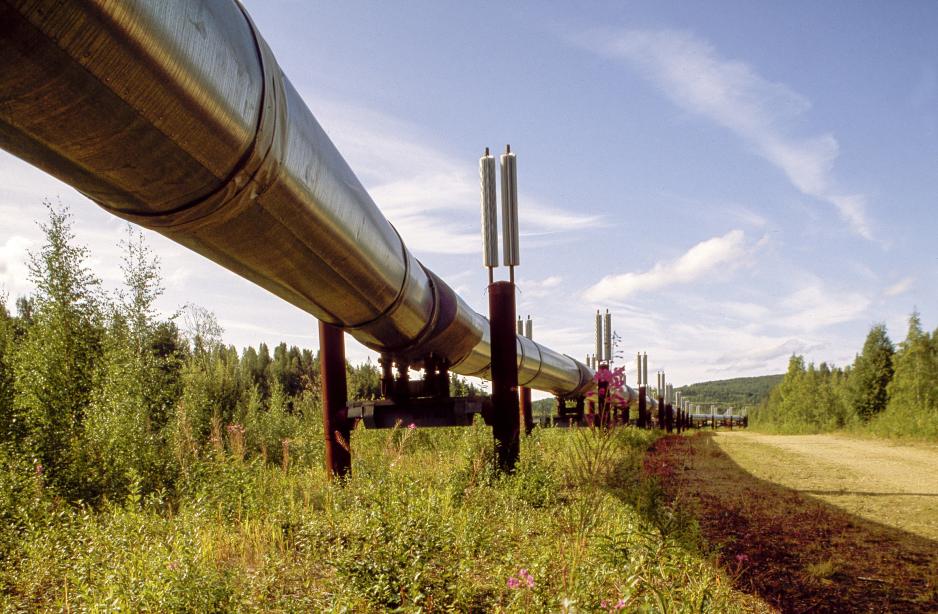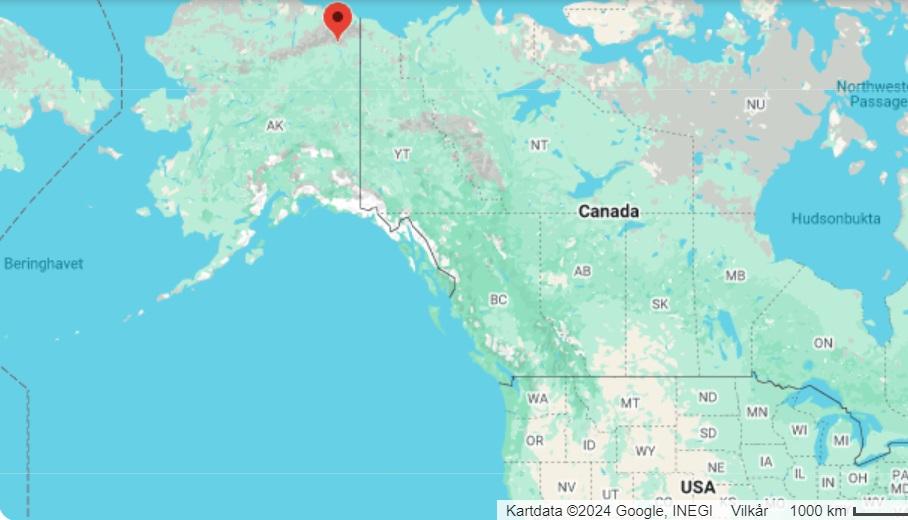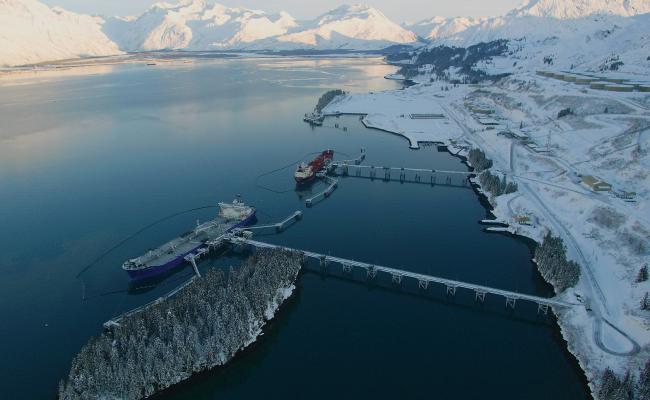Trump Signs Order to Maximize Resource Development in Alaska

The Trans-Alaska Pipeline runs through Alaska; from the oil fields in the north of the state, to the Valdez Marine Terminal in the south, where, the oil is loaded onto tankers for shipment to the international market. The oil and gas industry plays a crucial role in the economy of Alaska. (Photo: GPA Photo Archive / Carol M. Highsmith / Library of Congress).
President Donald Trump has signed an executive order aiming to boost Alaska's oil, gas, and other natural resource development. Alaska is still a high-risk, high-cost prospect for exploration in untouched areas, a longtime oil and gas journalist points out.
President Donald Trump has signed a comprehensive executive order aiming to bolster the development and production of Alaska's natural resources, such as oil and gas, minerals and timber.
The executive order, signed by Trump on Monday, aims to reverse many of the protections and policies put in place by the previous Biden administration on natural resource development in Alaska.
"Picking up right where he left"
Governor of Alaska, Mike Dunleavy (R), stated on X that the order recognizes "Alaska as a true energy warehouse, paving the way for unprecedented opportunities in resource development and energy independence."
Alaska's congressional delegation also welcomed the policy changes.
“President Trump is picking up right where he left off, reversing years of damaging decisions and prioritizing Alaska’s unrivaled opportunities for responsible energy and mineral development. The policies laid out in this Executive Order will improve our economy, our budget, and our quality of life while simultaneously making energy more affordable and enhancing national security," Senator Lisa Murkowski (R-Alaska) said in a joint press release with Senator Dan Sullivan and Representative Nick Begich (both R-Alaska).
Also read
"Maximize development"
Trump's plans to "maximize the development" and production of Alaska's natural resources come with no surprise. As HNN has reported, the new president has highlighted oil and gas extraction in Alaska a number of times during his campaign, and he has particularly emphasized the potential for oil drilling in the Arctic National Wildlife Refuge (ANWR).
The executive order sets out to expedite the permitting and leasing of energy and natural resource projects in the state, such as oil and gas development, hunting, and logging.
Trump's orders will relieve some of the regulatory risk, but long term it also depends on who is in the Oval Office four years from now.
Reversing Biden policies
The text further instructs specific agencies to take necessary steps to rescind, revoke, amend, or grant exemptions from any regulations, orders, or policies inconsistent with the policy set forth in the order.
Trump orders relevant agencies to rescind policies restricting oil and gas lease sales in the ANWR and reinstate previous Trump administration policies for the coastal plain oil and gas lease program in the wildlife refuge.
The debate about oil and gas drilling in the ANWR has been ongoing for years. Extraction in the wildlife refuge was forbidden for decades until the Tax Act of 2017, during the previous Trump administration, mandated two oil lease sales to be held.
Some of the Biden administration's latest actions included restrictions on the second oil lease sale, held on January 10th, to protect wildlife and the environment. The oil and gas lease sale did not draw any bids from companies.

The Arctic National Wildlife Refuge is located in the northeast corner of Alaska and stretches across an area of over 78,000 square kilometers. Oil development in the ANWR has been opposed by environmentalists and some Indigenous groups, among other things due to the area being an imporant calving ground for the porcupine caribou herd.
Trump further orders the prioritization of the development of Alaska’s liquified natural gas (LNG) potential, including permitting all necessary pipeline and export infrastructure related to the Alaska LNG Project.
Last week, High North News reported that the proposed Alaska LNG project has passed its next hurdle: the signing of a development agreement. The $44bn project would see Alaska export up to 20 million tonnes of LNG annually starting in 2031.
The order also includes instructions to rescind policies concerning the National Petroleum Reserve in Alaska. In April 2024, the Biden administration finalized legislation to ban fossil fuel drilling in nearly half of the reserve, located in the northwestern parts of the state.
While the Executive Order aims to reverse many restrictions imposed by the previous administration, particularly with regard to oil and gas development, there is still uncertainty about whether future projects will unfold.
Potential bidders and oil companies must consider factors such as the oil price, cost of development, and reputational risk.
Expert: A high-risk, high-cost prospect
"Market forces, supply, and demand, along with geopolitical risks, will determine crude oil prices, not the president's signature on a piece of paper," publisher of the Alaska-based newspaper Wrangell Sentinel, Larry Persily, tells HNN.

Larry Persily is a publisher for the Alaska-based newspaper Wrangell Sentinel.
Persily has covered oil and gas, government and budget issues in Alaska as a journalist for 25 years. He has also worked on oil and gas issues for the federal, municipal, and state governments.
"Overall, I don't expect the president's orders to appreciably change oil and gas production in Alaska so much that anyone outside of the state would notice," he continues.
Persily says the president's decisions may help with development on existing leases but remains skeptical about industry interest in onshore greenfield projects, such as the Arctic National Wildlife Refuge.
"As to Alaska, regardless of the president's order to change direction on several regulatory reviews, it will take more than that to spur companies and their investors to spend billions of dollars on new oil developments in Alaska. Explorers and producers have multiple prospects around the world, and they will invest in the ones that present the lowest risks and the highest probability of returns," he explains and concludes:
"That is the hurdle still facing Alaska, which is a high-risk, high-cost prospect for exploration in untouched areas. Trump's orders will relieve some of the regulatory risk, but in the long term, it also depends on who is in the Oval Office four years from now."



